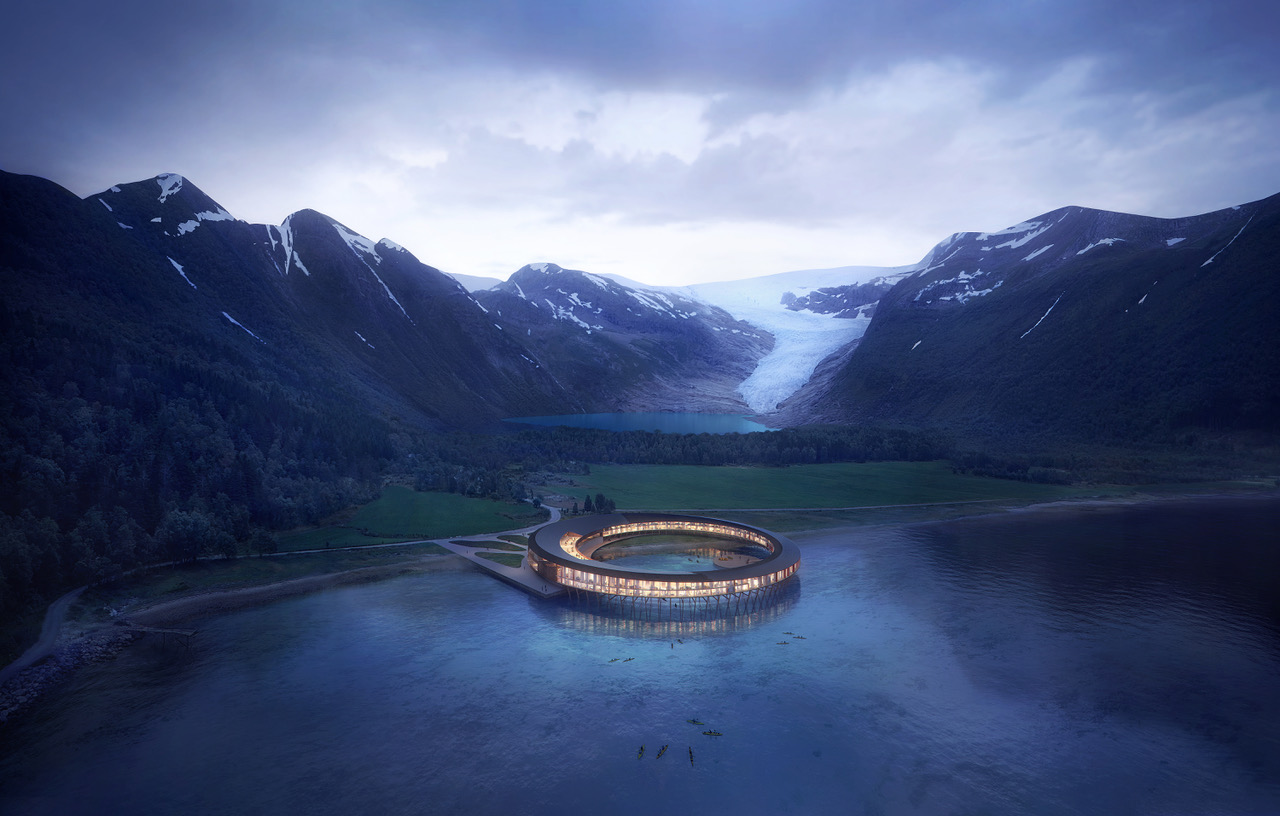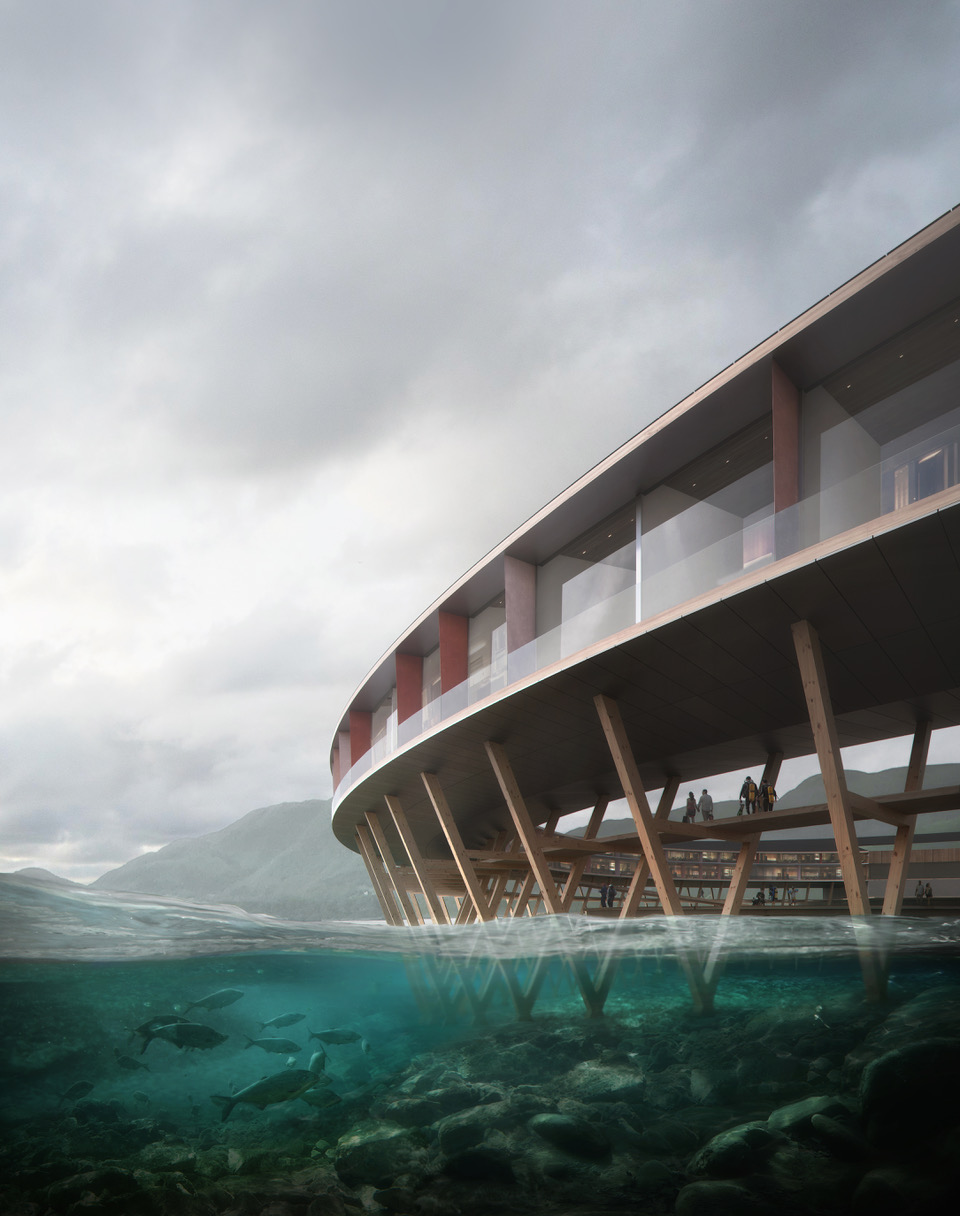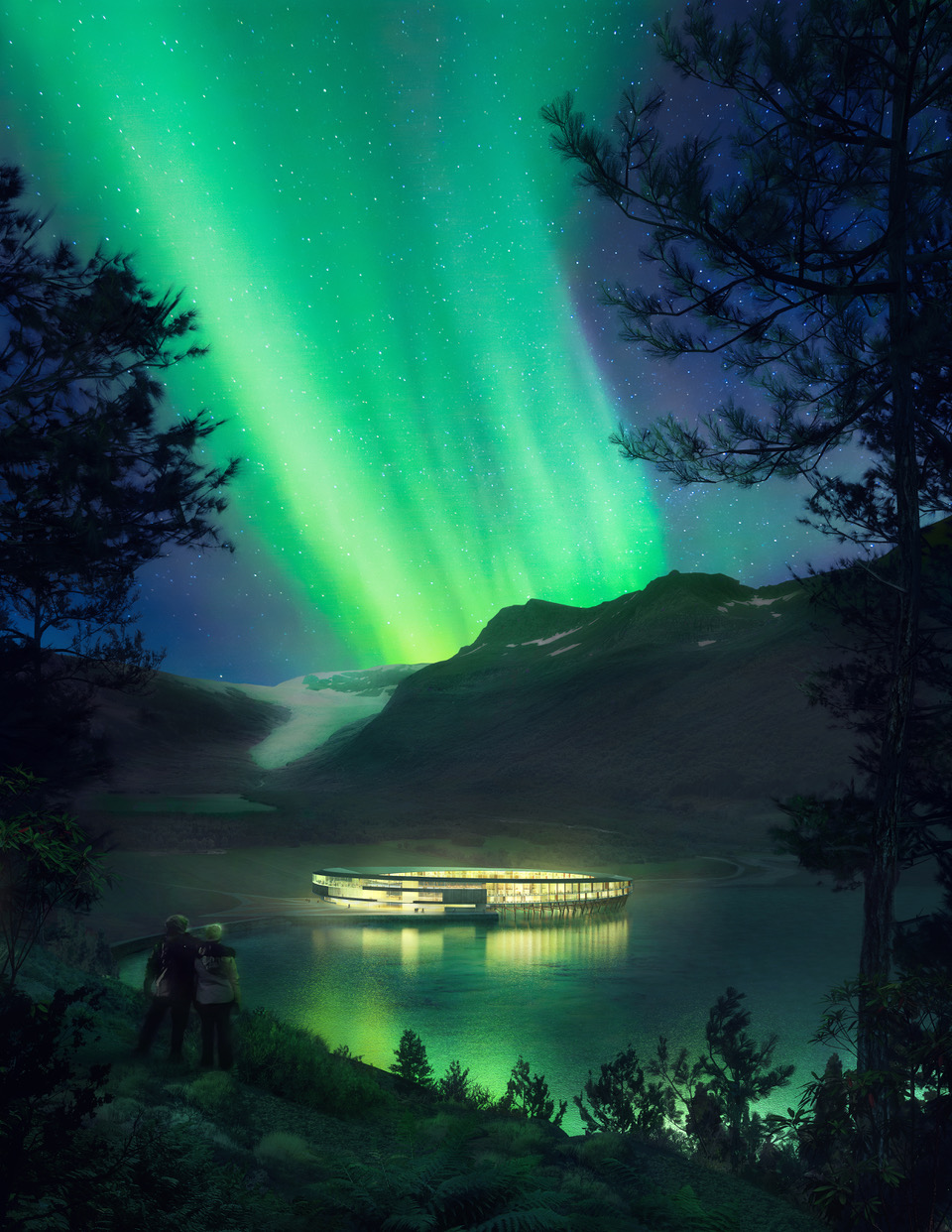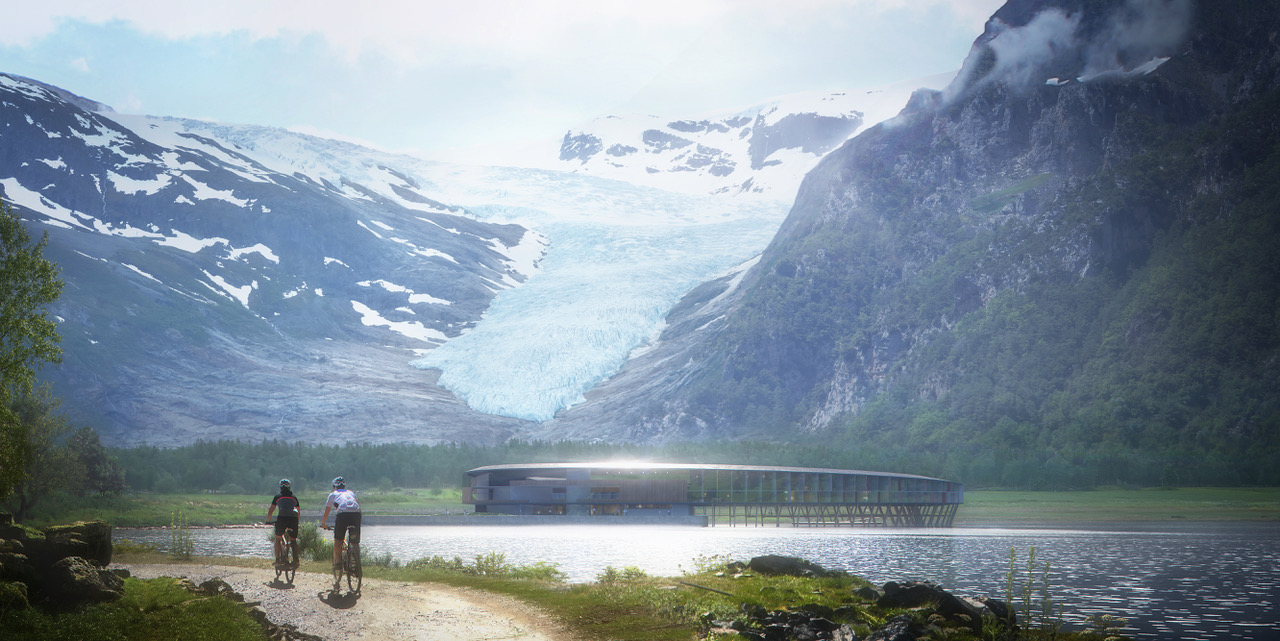
“Svart” is the first building to be built after the energy positive Powerhouse standard in a Northern climate. Not only does this new hotel reduce its yearly energy consumption by approximately 85% compared to a modern hotel, but it also produces its own energy – an absolute “must” in this precious arctic environment, the architects say.
Building in such a precious environment comes with some clear obligations in terms of preserving the natural beauty and the fauna and flora of the site. It was important for Snøhetta to design a sustainable building that will leave a minimal environmental footprint on this beautiful Northern nature. Building an energy positive and low-impact hotel is an essential factor to create a sustainable tourist destination respecting the unique features of the plot; the rare plant species, the clean waters and the blue ice of the Svartisen glacier, says Founding Partner at Snøhetta, Kjetil Trædal Thorsen.
A minimal footprint
The circular body of “Svart” extends from the shoreline by the foot of the Almlifjellet mountain and into the clear waters of the Holandsfjorden fjord. The circular shape provides a panoramic view of the fjord and an experience of living in proximity with nature.

The construction is inspired local vernacular architecture in the form of the “fiskehjell” (A-shaped wooden structure for drying fish) and the “rorbue” (a traditional type of seasonal house used by fishermen). The rorbue reference translates into the hotel’s supporting structure, which is built from weather resistant wooden poles stretching several meters below the surface of the fjord. The poles ensure that the building physically places a minimal footprint in the pristine nature and gives the building an almost transparent appearance.
The poles of the hotel double as a wooden boardwalk for visitors to stroll in the summer. In the winter, the boardwalk can be used to store boats and kayaks, reducing the need for garages and additional storage space. The height of structure also allows for paddlers to paddle under the hotel corpus.

The precious nature surrounding the hotel can only be accessed by boat and there are plans to introduce an energy neutral boat shuttle from the city of Bodø to the hotel.
An energy optimized design
To reach the Powerhouse standard, several cutting-edge design choices have been made. For example, the architects have conducted an extensive mapping of how solar radiation behaves in relation to mountainous context throughout the year to optimize the harvest of energy. The result of the study has been an importance premise for the circular design of the hotel, and both hotel rooms, restaurants and terraces are strategically placed to exploit the Sun’s energy throughout the day and seasons. The hotel’s roof is clad with Norwegian solar panels produced with clean hydro energy reducing the carbon footprint even further. Due to the long summer nights of this area, the annual production of solar energy will be significant.

Secluded terraces provide a shadow play in the façade of the hotel while also ensuring privacy. The facades protect against insolation from the sun in the summer when the sun is high in the sky, removing the need for artificial cooling. During the winter months, when the sun is low in the sky, the large windows of the façade allow for a maximum of insolation to exploit the Sun’s natural thermal energy.
Materials with low embodied energy have been used to reach the Powerhouse standard. Embodied energy is the amount of energy that is required to produce, transport, build and replace materials and products that go into a building. Embodied energy is highest in materials produced with energy derived from fossil fuels. The use of wood in construction and cladding minimizes the environmental impact of the building, and typically energy-intensive materials such as structural steel and concrete have been avoided as much as possible.

The hotel also uses geothermal wells that are connected to heat pumps. These are used to heat the building, thus reducing the building’s total energy consumption.
“ We believe that energy-positive buildings are the buildings of the future. An energy-positive building is a building which during its operational phase generates more energy than what was used for the production of building materials, its construction, operation and disposal. The building is therefore transformed from being part of the energy problem to becoming part of the energy solution. “
Snøhetta’s founder, Kjetil Trædal Thorsen
About the Powerhouse standard and the Powerhouse collaboration
Powerhouse is a collaboration between Snøhetta, Entra, Skanska, the ZERO Emission Resource Organization and Asplan Viak. The term “Powerhouse” is used to describe so-called “plus house” buildings that are built by the Powerhouse collaboration. “Plus houses” are energy producing buildings that, in the course of a 60 year period, will generate more renewable energy than the total amount of energy that would be required to sustain daily operations and to build, produce materials and demolish the building.
ABOUT SNØHETTA
For over 25 years, Snøhetta has designed some of the world’s most notable public and cultural projects.
Snøhetta is currently working on a number of projects internationally including the Le Monde Headquarters in Paris, the Cornell University Executive Education Center and Hotel in New York, and the Calgary’s New Central Library in Canada. In 2018, Harvard House Zero, the most ambitious net-zero energy retrofit to date will be completed for the Harvard Center for Green Buildings and Cities in Cambridge, Massachusetts.
Among its many recognitions, Snøhetta received The International Architecture Award and The Global Award for Sustainable Architecture in 2010. In 2016, Snøhetta was named the Wall Street Journal’s Architecture Innovator of the Year.